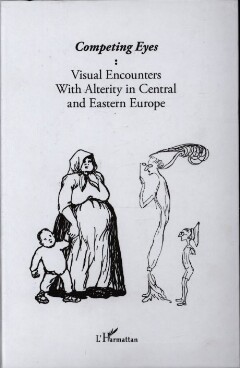

OCR
34 Vilmos Voigt clever essays of the above-mentioned topics: such as body and soul; accidental and general typologies of behavior; the sure and vain aspirations of man; good and bad rulers; ruling groups and institutions; the origins, means, and aims of education of the citizens; institutions, religion, faith, superstition, etc. In these synthetic chapters, the author does not repeat or summarize the previous chapters, nor does he give simple, synoptic, or didactic comparisons. The tranquil style of the synthetic chapters is faultless. Barclay mentions sometimes the famous persons of antiquity, and sometimes refers to his contemporaries, e.g., he characterizes the Hungarian king of Poland (Stephanus Bathory, Grand Duke of Transylvania 1571-1586, King of Poland 1575-1586) as a “rare type” of the generally accepted “good ruler,” who was serving not himself, but his country (Pauci cum Polonorum rege, Stephano Battorio, quid agant, non ex se, sed ex salute patriae, metiuntur—p. 329). While speaking about the different ways of interpretation of religious doctrines, Barclay contrasts the Ottoman versus the Persian way of the Islamic faith (Eiusmodi interpretum lites Ottomanorum gentem multo acerbius diversitate superstitionis, quam aemulatione imperii, in Persas incenderunt—pp. 390-391). Juxtaposing thus the Shiites and Sunnis, and calling their religion “superstition,” Barclay is saved from expressing his probably similar relativistic view concerning Catholics and Protestants in Europe. The characterization of nations and peoples is given only in the descriptive chapters. We have already observed that the construction of such chapters is similar, but there are important differences both in the order of the themes and in the style and topics of the descriptions. In each chapter we first learn about the geographic situation, with special emphasis on the “open accessibility” of the country (especially to sea or ocean). The same issue returns when import and export of goods, trade, commerce, and industry are treated. Then the climate is described, which for Barclay is an important fact, although it does not fully determine the ways of life of a country. The same could be said about the history. It gives essential background information but it does not explain the actual situation of a country. Barclay mentions some contemporary events, but he does not mention, e.g., the exploration of the New World, or the events of the Reformation. The exception is Turkish imperial ambitions under Sultan Ahmed, which is described at length. Language is not treated as a major factor for the indoles in Barclay’s chapters. He does not always mention the actual language used in one country. Barclay explains that the different groups of Germans belong to the same group linguistically, but fails to say it e.g. about the Italians, Spanish, or French. We can conclude then, that geography, climate, history, and language are pre-distinctive features in Barclay’s systematization. As a political philosopher, Barclay pays more attention to political features. He describes the forms of the states, the rank of the rulers, and the feudal rank system. He contrasts the local and central power systems of the various countries. The more or less importance of regionality is shown, but it does not seem to make a vital
Structural
Custom
Image Metadata
- Image width
- 1832 px
- Image height
- 2764 px
- Image resolution
- 300 px/inch
- Original File Size
- 1.07 MB
- Permalink to jpg
- 022_000056/0036.jpg
- Permalink to ocr
- 022_000056/0036.ocr
